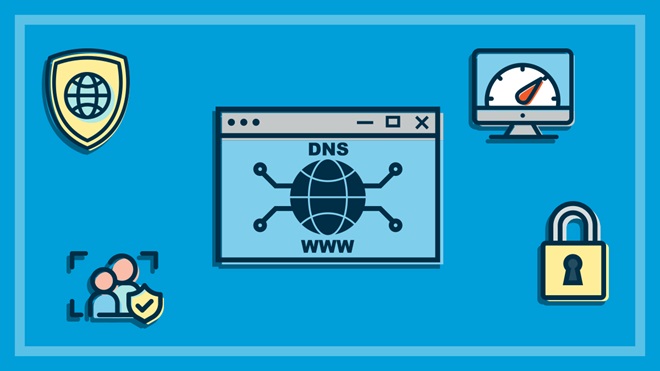Need to know
- Adjusting your Domain Name System (DNS) settings is free and simple to do
- Reasons to change your DNS server might include connection performance, privacy, security and parental controls
- It's easy to undo the changes you make to your DNS settings at any time
There are a handful of internet problems you can fix or
improve by changing your Domain Name System (DNS) server in Windows or your
router. Even if you haven't been experiencing problems, you still might notice some kind of improvement in speed or reliability.
Changing your DNS is generally free, easy to do, quick, and you can always reset everything if something goes wrong.
On this page:
- What does your DNS do?
- Why change your DNS?
- How to change your DNS settings in Windows
- Changing your router's DNS settings
What does your DNS do?
People communicate in words, but computers think in numbers.
So when you want to visit a website or use an online service, your desired
destination needs to be converted into something a computer will understand.
Broadly speaking, a DNS server acts as a translator between
the internet and you, and starts the process of connecting you to your desired website
or service.
For example, when you visit choice.com.au, your request travels via your DNS server, which in
turn starts querying other servers to find the numeric IP address of the CHOICE
website, which is 20.53.105.2. Once your DNS server has the IP address, your device
can connect to our website. The same goes for internet apps, cloud storage, or
any other online service.
Why change your DNS?
There are several good reasons to change your DNS, including internet
performance, privacy, and security or parental controls.
Performance
Your default DNS server is usually arranged by your internet
service provider (ISP). While yours might work fine, it's possible a free DNS
run by another company, such as Google or Cloudflare, will be faster or more
reliable.
Privacy
Your DNS activity can be monitored and recorded. This
information can be used for benign purposes such as a company improving its own
services, but also for serving ads or keeping tabs on your online movements,
among other things.
Web browsers are increasingly side-stepping this by saving a
cache of IP addresses, rather than relying on a DNS. But it's not guaranteed.
If you're privacy conscious, you might consider finding a
DNS service that clearly outlines its privacy policies.
Security and parental controls
Some DNS providers block malicious websites, or offer parental control features to block certain kinds of content, though you might have to pay for these features.
How to change your DNS settings in Windows
Changing the DNS settings for a Windows device is easy. Go to your Start menu > Settings > Network & Internet.

Scroll down to "Advanced network settings" and click Change Adapter Options.

Next, right-click your active internet connection and select Properties.

Click on Internet
Protocol Version 4 (TCP/IPv4) to highlight it (don't untick the toggle next
to it). Once it's highlighted, click Properties.
In the second section of this window, click the toggle next to Use the following DNS server addresses and enter the primary and alternate addresses for your desired DNS.

These are the DNS addresses for Cloudflare, but there are plenty more options available to you.
Tick Validate
settings upon exit and click OK.
It's a good idea to test your connection by visiting a speed test website via
your browser such as speedtest.net.
If you ever want to switch back to your default DNS, reset
the toggle to Obtain DNS server address
automatically.
Changing your router's DNS settings
Your router's settings menu might let you edit the DNS your
household's connection runs through, as long as those devices are set to use a
default DNS and not a specific one.
The method for changing router DNS settings depends on the
router. You'll usually find a sticker on the underside with instructions on how
to access its settings. But it's a good idea to do a web search for how to
adjust DNS settings for your router's make and model, rather than poking around
the menus yourself.
Plenty of options available
There are plenty of free and paid DNS services, many of which might suit your needs in different ways. Some have a specific
focus such as speed, privacy, safety, parental controls or a mixture.
Probably the most popular free options are Cloudflare,
Google and OpenDNS.
- Cloudflare's addresses are: 1.1.1.1 and 1.0.0.1
- Google's addresses are: 8.8.8.8 and 8.8.4.4
- OpenDNS' addresses are: 208.67.222.222 and 208.67.220.220
We're on your side
For more than 60 years, we've been making a difference for Australian consumers. In that time, we've never taken ads or sponsorship.
Instead we're funded by members who value expert reviews and independent product testing.
With no self-interest behind our advice, you don't just buy smarter, you get the answers that you need.
You know without hesitation what's safe for you and your family. And our recent sunscreens test showed just how important it is to keep business claims in check.
So you'll never be alone when something goes wrong or a business treats you unfairly.
Learn more about CHOICE membership today
Stock images: Getty, unless otherwise stated.



